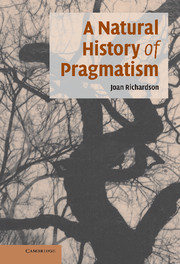Book contents
- Frontmatter
- Contents
- Preface
- List of abbreviations
- 1 Introduction: frontier instances
- 2 In Jonathan Edwards's room of the idea
- 3 Emerson's moving pictures
- 4 William James's feeling of if
- 5 Henry James's more than rational distortion
- 6 Wallace Stevens's radiant and productive atmosphere
- 7 Gertrude Stein, James's Melancthon/a
- Notes
- Bibliography
- Index
- References
Bibliography
Published online by Cambridge University Press: 22 September 2009
- Frontmatter
- Contents
- Preface
- List of abbreviations
- 1 Introduction: frontier instances
- 2 In Jonathan Edwards's room of the idea
- 3 Emerson's moving pictures
- 4 William James's feeling of if
- 5 Henry James's more than rational distortion
- 6 Wallace Stevens's radiant and productive atmosphere
- 7 Gertrude Stein, James's Melancthon/a
- Notes
- Bibliography
- Index
- References
Summary

- Type
- Chapter
- Information
- A Natural History of PragmatismThe Fact of Feeling from Jonathan Edwards to Gertrude Stein, pp. 303 - 315Publisher: Cambridge University PressPrint publication year: 2006

